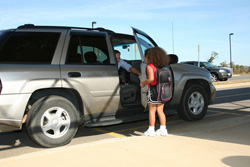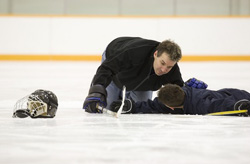If you cannot see the links or images in this email please, View Online Version.
To ensure delivery to your inbox, please add info@radiussecurity.ca to your address book.
 |
||||||
 |
||||||
| FALL 2011 |
 |
|||||
 |
||||||
|
Snatched: Preventing Child Abductions 
An 8-year-old Woodstock girl meets a stranger after school and skips off with her to see a puppy. A New Westminster man tries to lure a 13-year-old girl over the Internet. A child disappears roughly every nine minutes in Canada. 
Exercise Your Brain Like the rest of your body, your brain stays healthier with exercise.Some suggestions for fending off Alzheimer’s and other brain diseases:

Keep Your Head Up, Kids (and Adults)!
While hockey players aged 6 to 60 wish they could play like Sidney Crosby, no one envies his struggles with concussion symptoms. Some researchers argue that body checking should be eliminated from youth hockey altogether.
To prevent hockey injuries, wear appropriate (CSA-approved) safety gear, such as:
|
What's On In
Terry Fox Run - Run Sites Bullying at Work WHAT YOU CAN DO  Name it. Abuse of power, inappropriate remarks and jokes, harassment. Recognize aggressive behaviour that goes beyond strong management.
Name it. Abuse of power, inappropriate remarks and jokes, harassment. Recognize aggressive behaviour that goes beyond strong management.Speak up. Firmly tell the bully to stop. You can ask a supervisor or, if applicable, a union representative to accompany you. Keep a journal. Record the date, time and a detailed description of each incident. Note any witnesses and the outcome. Collect evidence. Keep copies of e-mails, letters, voicemails, memos etc. Report it. If your manager minimizes your concerns, proceed to the next level of management Do not retaliate. Or else you may look like the bully. More information: Canadian Centre for Occupational Health and Safety Quick Safety Tip FOOD SAFE LUNCHES Cold: Less than 4° C. Discard or refrigerate leftovers. Ice packs only work for a few hours.Hot: More than 60° C. Preheat your insulated container with boiling water for a few minutes. Add hot food and immediately seal till lunchtime. |
|||||
 |
|
|||||
 You don’t need to pump up your speed or leave the ice when you deliver a check. And you should keep your head up when you have the puck near the boards.
You don’t need to pump up your speed or leave the ice when you deliver a check. And you should keep your head up when you have the puck near the boards.